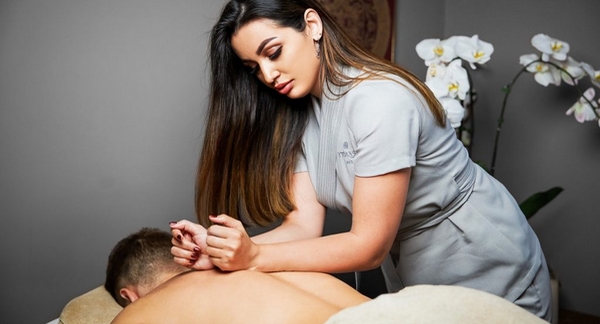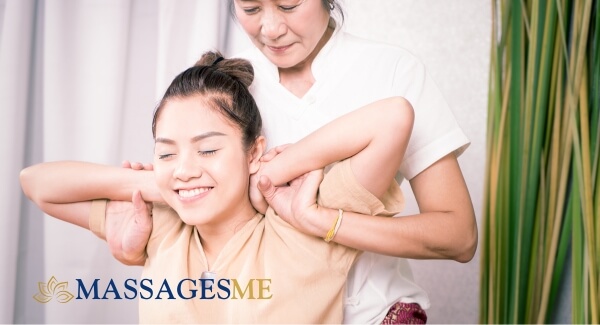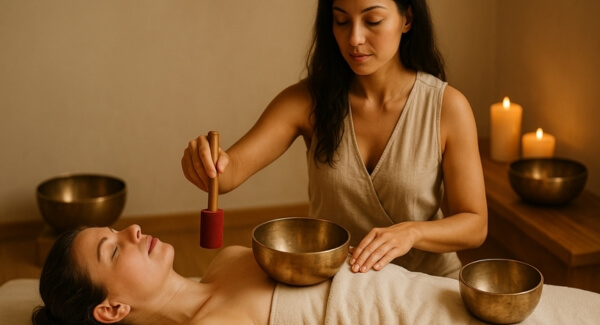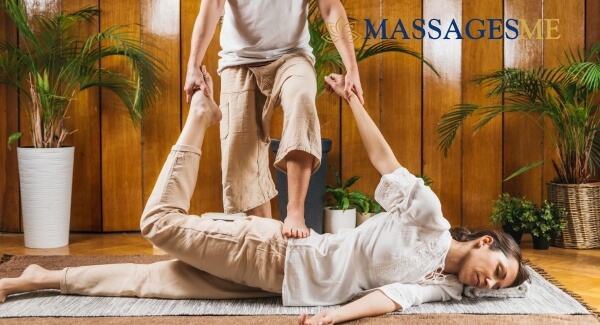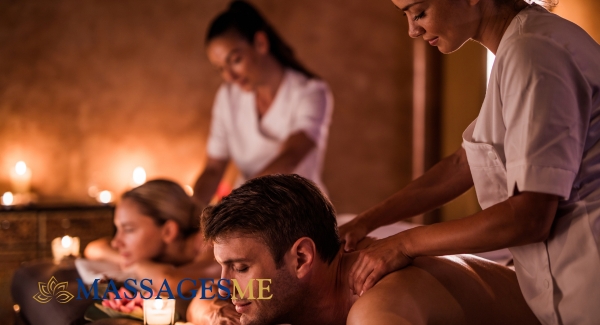Discover the transformative power of massage therapy in London and across the UK, where ancient healing traditions meet modern wellness expertise. Whether you're seeking relief from chronic pain, stress reduction, or want to enhance your overall well-being, choosing the right massage technique can significantly impact your health journey.
Professional massage therapy in London has evolved into a sophisticated healthcare practice, with certified therapists offering a range of treatments, from traditional Swedish massage to specialised therapies like Thai massage and deep tissue therapy. This comprehensive guide explores 14 evidence-based massage techniques available across the UK, helping you make informed decisions about your therapeutic wellness needs.
🎥 Understanding Massage Therapy: Expert Introduction
Watch this comprehensive overview of massage therapy benefits and techniques before exploring specific treatments:
🔑 Key Information for Massage Therapy Seekers
Essential Knowledge: Massage therapy encompasses various techniques designed to promote relaxation, relieve muscle tension, reduce stress, and enhance overall well-being. Before any treatment, qualified therapists conduct thorough consultations to ensure safety and effectiveness, tailoring sessions to individual needs, health conditions, and therapeutic goals.
Professional Standards: All massage treatments should be performed by certified therapists with proper training in anatomy, physiology, and therapeutic techniques. Understanding different massage types helps you choose the most appropriate treatment for your specific wellness objectives.
📋 Complete Guide Contents
- Professional Massage Therapy Overview
- 1. Swedish Massage - Classic Relaxation Therapy
- 2. Deep Tissue Massage - Targeted Pain Relief
- 3. Thai Massage - Ancient Healing Arts
- 4. Shiatsu Massage - Japanese Pressure Point Therapy
- 5. Sports Massage - Athletic Performance Enhancement
- 6. Hot Stone Massage - Thermal Therapy
- 7. Aromatherapy Massage - Essential Oil Therapy
- 8. Reflexology - Holistic Foot Therapy
- 9. Lomi Lomi Massage - Hawaiian Healing
- 10. Ayurvedic Massage - Traditional Indian Medicine
- 11. Indian Head Massage - Upper Body Focus
- 12. Balinese Massage - Indonesian Wellness
- 13. Relaxing Massage - Pure Stress Relief
- 14. Chair Massage - Convenient Workplace Therapy
- Professional Massage Pricing Guide
- How to Choose a Qualified Therapist
- Expert Summary and Recommendations
Professional Massage Therapy in London and the UK
The landscape of therapeutic massage in London reflects the city's position as a global wellness hub, where traditional healing practices from around the world converge with modern healthcare approaches. From ancient techniques like Thai massage to evidence-based treatments like Swedish massage therapy, London's certified practitioners offer comprehensive wellness solutions.
Professional massage therapy serves multiple therapeutic purposes: promoting circulation, reducing muscle tension, managing chronic pain, and supporting mental health through stress reduction. The Complementary and Natural Healthcare Council regulates many massage therapists in the UK, ensuring professional standards and client safety.
📈 Evidence-Based Benefits of Regular Massage Therapy:
- Pain Management: Reduces chronic pain intensity by 25-50% according to clinical studies
- Stress Reduction: Decreases cortisol levels and increases serotonin production
- Improved Circulation: Enhances blood flow and lymphatic drainage
- Better Sleep Quality: Promotes deeper, more restorative sleep patterns
- Enhanced Recovery: Accelerates healing from exercise and injury
- Mental Health Support: Reduces symptoms of anxiety and depression
1. Swedish Massage: Foundation of Modern Massage Therapy
Swedish massage therapy represents the cornerstone of Western massage practice, developed by Per Henrik Ling in the 19th century. This technique remains the most popular choice in London and across the UK, offering an ideal introduction to therapeutic bodywork for new clients while providing substantial benefits for regular recipients.
🎥 Swedish Massage Demonstration
🔧 Core Swedish Massage Techniques
Professional Swedish massage incorporates five fundamental movements, each serving specific therapeutic purposes:
- Effleurage: Long, flowing strokes that warm muscles and improve circulation while promoting relaxation
- Petrissage: Kneading and rolling motions that enhance blood flow and help release muscle tension
- Friction: Deep, circular movements targeting specific areas to break up muscle adhesions and knots
- Tapotement: Rhythmic tapping movements that invigorate muscles and stimulate nerve responses
- Vibration: Gentle shaking motions that help relax muscles and release accumulated tension
✅ Swedish Massage Benefits
- Stress Relief: Reduces cortisol levels and promotes relaxation response
- Improved Circulation: Enhances blood flow and oxygen delivery to tissues
- Pain Reduction: Alleviates muscle tension and chronic pain conditions
- Better Sleep: Promotes deeper, more restorative sleep patterns
- Flexibility Enhancement: Improves range of motion and muscle elasticity
- Immune Support: Stimulates lymphatic system function
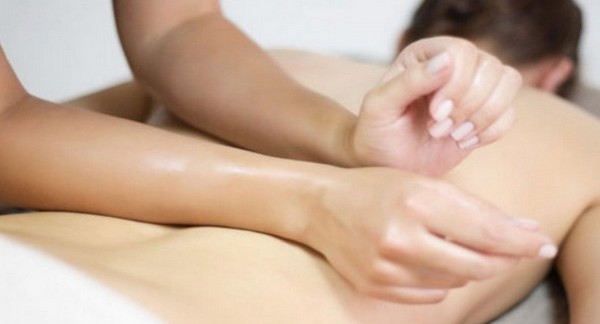
⚠️ Important Safety Considerations
Medical Disclaimer: Always consult healthcare providers before massage therapy if you have medical conditions. Swedish massage may not be suitable for:
- Active Infections: Fever, contagious skin conditions, or acute illness
- Recent Injuries: Fractures, sprains, or wounds still in acute healing phase
- Blood Disorders: Clotting disorders or blood-thinning medications
- Inflammatory Conditions: Acute arthritis flares or severe osteoporosis
- Pregnancy Complications: High-risk pregnancies require specialized prenatal massage
- Cardiovascular Issues: Uncontrolled high blood pressure or recent heart surgery
If you're seeking professional Swedish massage therapy, explore qualified practitioners on our platform. We connect you with certified therapists offering both mobile and clinic-based services throughout London and the UK. To browse their profiles, visit our Swedish massage therapists page.
2. Deep Tissue Massage: Advanced Therapeutic Intervention
Deep tissue massage therapy ranks as the second most sought-after treatment in London, specifically designed to address chronic pain, muscle tension, and injury recovery. This advanced technique targets deeper muscle layers and connective tissues, making it ideal for individuals with specific therapeutic needs rather than general relaxation.
🎯 Deep Tissue Methodology
Professional deep tissue massage employs specialised techniques distinct from relaxation massage:
- Slow, Deliberate Pressure: Sustained pressure applied gradually to reach deeper muscle layers safely
- Cross-Fiber Friction: Movements across muscle grain to break up scar tissue and adhesions
- Trigger Point Release: Focused pressure on specific knots to release chronic tension patterns
- Myofascial Techniques: Addressing connective tissue restrictions that limit movement
- Active Stretching: Incorporating movement to enhance flexibility and range of motion
🎥 Deep Tissue Massage Techniques
🎯 Therapeutic Applications
- Chronic Pain Relief: Addresses long-standing muscle tension and pain patterns
- Injury Rehabilitation: Supports recovery from sports injuries and repetitive strain
- Postural Improvement: Corrects imbalances caused by poor posture or desk work
- Scar Tissue Reduction: Breaks down adhesions and improves tissue mobility
- Athletic Performance: Enhances muscle function and prevents injury
- Stress-Related Tension: Releases deeply held physical manifestations of stress
⚠️ Deep Tissue Precautions
Enhanced Safety Requirements: Deep tissue massage requires additional precautions due to increased intensity:
- Recent Surgery: Wait minimum 6 weeks post-surgery with medical clearance
- Severe Bruising: Avoid treatment until discoloration completely resolves
- Blood Clot History: Requires medical clearance before any deep pressure work
- Cancer Treatment: Specialized oncology massage training required
- Severe Osteoporosis: Risk of fracture with deep pressure techniques
- Medication Interactions: Blood thinners increase bruising risk significantly
For professional deep tissue therapy in London, visit our page on deep tissue massage. Our certified therapists provide evidence-based treatment for chronic pain management and injury recovery.
3. Thai Massage: Ancient Healing Through Movement
Thai massage therapy represents one of the world's oldest healing traditions, combining elements of acupressure, yoga-like stretching, and energy work. Originating over 2,500 years ago in Thailand, this unique approach has gained tremendous popularity in London, as clients seek more active and engaging therapeutic experiences.
🧘 Traditional Thai Massage Elements
Authentic Thai massage incorporates multiple therapeutic approaches in a single session:
- Sen Line Work: Pressure applied along energy pathways similar to acupuncture meridians
- Assisted Stretching: Therapist-guided movements increasing flexibility and range of motion
- Rhythmic Compression: Palm and thumb pressure applied in flowing sequences
- Yoga-like Positions: Recipients moved into therapeutic postures for deeper benefits
- Joint Mobilization: Gentle movements improving joint function and reducing stiffness
Unlike Western massage modalities, Thai massage is performed fully clothed on a floor mat, allowing for greater freedom of movement and more comprehensive stretching. Sessions typically last 90-120 minutes, providing time for the gradual, meditative approach that characterises authentic Thai bodywork.
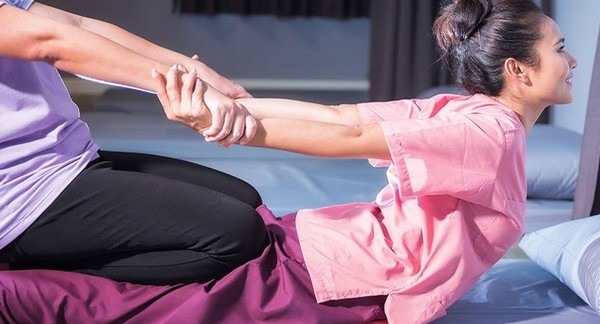
🌟 Unique Thai Massage Benefits
- Enhanced Flexibility: Dramatic improvements in range of motion and muscle elasticity
- Energy Balancing: Promotes harmonious flow of life energy throughout the body
- Stress Relief: Meditative quality induces deep relaxation and mental clarity
- Joint Health: Gentle mobilization maintains and improves joint function
- Circulation Boost: Unique positions enhance blood flow and lymphatic drainage
- Pain Reduction: Addresses chronic tension through gentle, sustained stretching
⚠️ Thai Massage Considerations
Physical Requirements Assessment: Thai massage's active nature requires specific considerations:
- Mobility Limitations: Requires reasonable flexibility for safe positioning
- Pregnancy Adaptations: Specialized prenatal modifications essential after first trimester
- Joint Instability: Conditions like hypermobility syndrome require expert modification
- Cardiovascular Conditions: Position changes may affect blood pressure
- Recent Injuries: Active stretching contraindicated during acute healing phases
- Severe Arthritis: Joint mobilization may aggravate inflammatory conditions
Experience the ancient healing art of authentic Thai massage with our certified practitioners. Our therapists, trained in traditional techniques, bring this practice to London and throughout the UK. You can find their profiles on our Thai massage therapists page.
4. Shiatsu Massage: Japanese Pressure Point Mastery
Shiatsu massage therapy originated in Japan as a sophisticated healing system based on principles of Traditional Chinese Medicine. The word "shiatsu" literally translates to "finger pressure," reflecting this modality's precise and targeted approach to balancing the body's energy systems through the manipulation of specific pressure points.
🎌 Shiatsu Methodology and Philosophy
Professional Shiatsu encompasses multiple therapeutic approaches rooted in Eastern medicine:
- Meridian Assessment: Evaluation of energy pathways to identify imbalances and blockages
- Pressure Point Stimulation: Precise finger, thumb, and palm pressure on specific acupoints
- Energy Balancing: Harmonising qi (life energy) flow throughout the body's energy systems
- Gentle Stretching: Assisted movements to enhance energy flow and physical flexibility
- Breathing Integration: Coordinating breath work with pressure application for deeper therapeutic effect
Shiatsu practitioners undergo extensive training in Traditional Chinese Medicine theory, learning to assess clients' energy patterns and customise treatments accordingly. Sessions are performed fully clothed on a floor mat, allowing therapists to use their body weight effectively while maintaining precise pressure control.
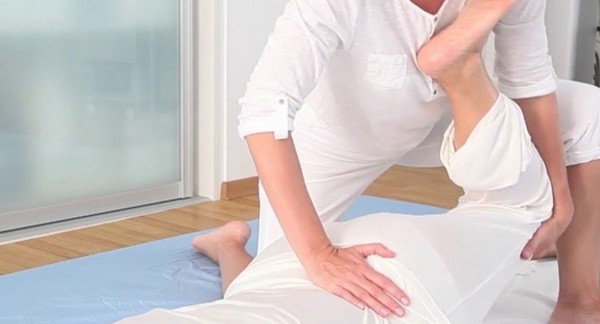
⚡ Shiatsu Therapeutic Effects
- Energy Regulation: Balances overactive or depleted energy systems
- Stress Reduction: Calms nervous system through precise pressure point stimulation
- Pain Management: Addresses both acute and chronic pain through energy rebalancing
- Digestive Support: Specific techniques improve gastrointestinal function
- Sleep Enhancement: Promotes deeper, more restorative sleep patterns
- Emotional Balance: Addresses physical manifestations of emotional stress
⚠️ Shiatsu Safety Guidelines
Energy Work Precautions: Shiatsu's energetic nature requires specific safety considerations:
- Acute Illness: Energy work may intensify illness symptoms during active infection
- Pregnancy Modifications: Certain pressure points contraindicated during pregnancy
- Cancer Treatment: Requires specialized training in oncology energy work
- Cardiovascular Conditions: Energy shifts may affect blood pressure and heart rate
- Mental Health Considerations: Deep energy work may trigger emotional releases
- Medication Interactions: Energy balancing may affect medication absorption rates
Connect with qualified Shiatsu practitioners in London. Our certified therapists provide authentic Japanese healing techniques for comprehensive wellness support. Visit our Shiatsu massage page to find a practitioner.
5. Sports Massage: Performance Enhancement and Recovery
Sports massage therapy has evolved from a specialised treatment for elite athletes to an essential wellness practice for anyone leading an active lifestyle. In London's fitness-conscious environment, sports massage serves professionals, gym enthusiasts, weekend warriors, and recreational athletes who seek to optimise their performance and accelerate recovery.
🏃 Sports Massage Applications
Professional sports massage adapts to different phases of athletic activity and training cycles:
- Pre-Event Massage: Stimulating techniques to warm muscles and prepare the body for activity
- Post-Event Recovery: Gentle techniques to reduce inflammation and accelerate healing
- Maintenance Therapy: Regular sessions to prevent injury and maintain optimal muscle function
- Rehabilitation Support: Specialized techniques to aid recovery from sports-related injuries
- Performance Optimization: Advanced methods to enhance muscle efficiency and flexibility
Modern sports massage integrates evidence-based techniques with cutting-edge understanding of exercise physiology. Certified sports massage therapists undergo specialised training in anatomy, injury assessment, and performance enhancement protocols, making them valuable members of any athlete's support team.
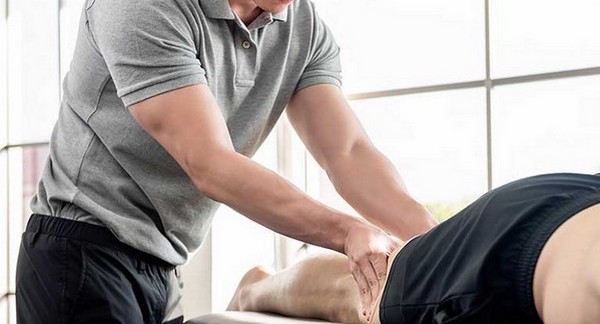
🎯 Sports Massage Performance Benefits
- Injury Prevention: Identifies and addresses muscle imbalances before they cause problems
- Enhanced Recovery: Reduces muscle soreness and accelerates healing between training sessions
- Improved Performance: Optimises muscle function and range of motion for peak athletic output
- Pain Management: Addresses acute and chronic pain from training and competition
- Flexibility Enhancement: Maintains and improves range of motion essential for athletic performance
- Stress Reduction: Manages physical and psychological stress associated with competition
🎥 Sports Massage Techniques for Recovery
⚠️ Sports Massage Safety Protocols
Athletic Context Considerations: Sports massage requires specialized safety awareness:
- Acute Injuries: Never massage directly over fractures, tears, or acute inflammation
- Competition Timing: Avoid deep work 24-48 hours before important events
- Overtraining Syndrome: Recognize when rest is more beneficial than massage
- Blood Clot Risk: Athletes have higher risk; always assess for symptoms
- Dehydration Issues: Ensure proper hydration before and after intensive sessions
- Performance Enhancement Drugs: Some substances affect healing and massage response
Find certified sports massage therapists specialising in athletic performance on our platform. Our practitioners serve everyone from professional athletes to fitness enthusiasts across London and the UK. To learn more or book a session, visit our page on sports massage.
6. Hot Stone Massage: Thermal Therapy for Deep Relaxation
Hot stone massage therapy combines the therapeutic benefits of traditional massage with the healing properties of heated basalt stones. This luxurious treatment has gained significant popularity in London's spa and wellness centres, offering clients a uniquely soothing experience that promotes profound relaxation and muscle tension relief.
🔥 Hot Stone Massage Methodology
Professional hot stone therapy involves precise temperature control and strategic stone placement:
- Stone Selection: Smooth basalt stones chosen for their heat retention and mineral properties
- Temperature Management: Stones heated to 130-145°F (54-63°C) for optimal therapeutic effect
- Strategic Placement: Stones positioned on energy points and areas of muscle tension
- Gliding Techniques: Warm stones used as massage tools to deliver heat while manipulating muscles
- Contrast Therapy: Some practitioners incorporate cool stones for enhanced circulatory benefits
The therapeutic heat from properly prepared stones penetrates deeper into muscle tissue than traditional massage alone, allowing therapists to work more effectively on chronic tension while providing an intensely relaxing experience. This combination makes hot stone massage particularly beneficial for clients with high stress levels or chronic muscle tightness.
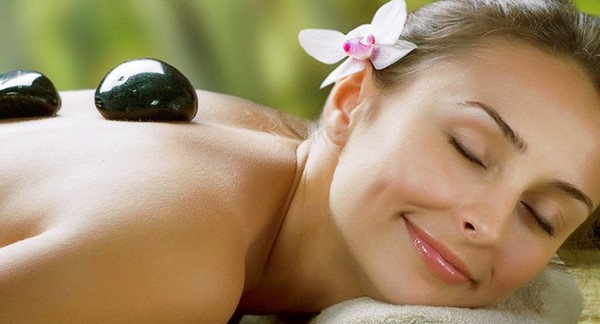
🌡️ Hot Stone Therapeutic Effects
- Deep Muscle Relaxation: Heat penetrates tissue layers for profound muscle release
- Enhanced Circulation: Thermal therapy improves blood flow and oxygen delivery
- Stress Relief: Warmth activates parasympathetic nervous system for deep relaxation
- Pain Reduction: Heat therapy effectively manages chronic pain and muscle stiffness
- Improved Sleep: Deep relaxation promotes better sleep quality and duration
- Detoxification: Enhanced circulation supports natural detoxification processes
⚠️ Hot Stone Safety Requirements
Thermal Therapy Precautions: Heat-based treatments require enhanced safety protocols:
- Temperature Sensitivity: Diabetes, neuropathy, or circulation disorders increase burn risk
- Pregnancy Considerations: Heat therapy may affect blood pressure and circulation
- Cardiovascular Conditions: Heat stress may impact heart rate and blood pressure
- Skin Conditions: Sunburn, rashes, or open wounds contraindicate heat application
- Medication Effects: Some drugs affect temperature sensation and heat tolerance
- Recent Surgery: Heat may increase inflammation and interfere with healing
Restore balance and ease muscle tension with a professional hot stone massage from our team of certified thermal therapy specialists. We provide safe and effective treatments throughout London and the wider UK. To learn more or book an appointment, please visit our hot stone massage page.
7. Aromatherapy Massage: Essential Oil Therapy Integration
Aromatherapy massage therapy combines the physical benefits of therapeutic massage with the powerful healing properties of essential oils. This integrative approach addresses both physical tension and emotional well-being, making it particularly popular among London's health-conscious population, who seek holistic wellness solutions.
🌸 Essential Oil Integration Methods
Professional aromatherapy massage involves sophisticated essential oil selection and application:
- Custom Blending: Essential oils selected based on individual therapeutic needs and preferences
- Carrier Oil Dilution: Proper dilution ratios ensuring skin safety while maintaining therapeutic potency
- Inhalation Therapy: Aromatic compounds accessed through olfactory system for emotional benefits
- Topical Application: Direct skin absorption of therapeutic compounds during massage
- Environmental Enhancement: Diffused oils creating therapeutic atmosphere throughout treatment
Qualified aromatherapy practitioners undergo specialised training in essential oil safety, therapeutic properties, and proper blending techniques. This knowledge ensures that treatments are both effective and safe, as essential oils are potent substances requiring careful handling and application.
🌸 Aromatherapy Therapeutic Applications
- Stress Management: Lavender and chamomile oils promote deep relaxation and anxiety relief
- Pain Relief: Eucalyptus and peppermint oils provide natural analgesic effects
- Mood Enhancement: Citrus oils uplift spirits and combat depression symptoms
- Sleep Improvement: Valerian and bergamot oils promote restful sleep patterns
- Immune Support: Tea tree and eucalyptus oils provide antimicrobial benefits
- Respiratory Health: Eucalyptus and pine oils support clear breathing
⚠️ Essential Oil Safety Protocols
Aromatherapy-Specific Precautions: Essential oils are potent substances requiring careful consideration:
- Allergic Reactions: Patch testing recommended before first use of new oils
- Pregnancy Restrictions: Many oils contraindicated during pregnancy, especially first trimester
- Photosensitivity: Citrus oils increase sun sensitivity for 12-24 hours post-treatment
- Respiratory Conditions: Strong scents may trigger asthma or breathing difficulties
- Medication Interactions: Some oils may affect medication absorption or effectiveness
- Skin Sensitivity: Concentrated oils may cause irritation without proper dilution
Experience the therapeutic benefits of essential oils with our certified aromatherapy practitioners. Our qualified therapists are dedicated to providing safe and effective treatments tailored to your unique wellness goals. To find out more about how we can help, explore our range of aromatherapy massage treatments.
8. Reflexology: Holistic Healing Through Foot Therapy
Reflexology therapy represents a specialised healing practice based on the principle that specific points on the feet, hands, and ears correspond to different organs and body systems. This non-invasive treatment has gained recognition in London's healthcare community as a complementary therapy that supports overall wellness and addresses specific health concerns.
🦶 Reflexology Methodology and Theory
Professional reflexology involves systematic work on specific reflex points:
- Zone Mapping: Precise identification of reflex points corresponding to body organs and systems
- Pressure Techniques: Specific thumb and finger movements applied to stimulate reflex areas
- Systematic Approach: Comprehensive treatment covering all body systems through foot mapping
- Assessment Integration: Reading foot texture, temperature, and sensitivity for health insights
- Relaxation Protocol: Stress reduction techniques enhancing therapeutic effectiveness
Certified reflexologists undergo extensive training in anatomy, physiology, and specialised pressure techniques. While reflexology theory differs from conventional medicine, research supports its effectiveness in reducing stress, managing pain, and promoting overall well-being.
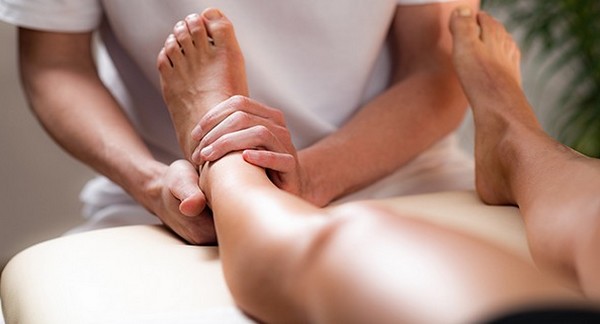
🔄 Reflexology Therapeutic Effects
- Stress Reduction: Promotes deep relaxation and nervous system balancing
- Pain Management: Provides relief from chronic pain conditions through reflex stimulation
- Improved Circulation: Enhances blood flow and lymphatic drainage throughout body
- Digestive Support: Specific reflex points may help with gastrointestinal issues
- Sleep Enhancement: Promotes better sleep quality through relaxation response
- Immune Support: May stimulate immune system function through stress reduction
⚠️ Reflexology Safety Guidelines
Foot-Specific Treatment Considerations: Reflexology requires awareness of foot-related conditions:
- Foot Injuries: Open wounds, infections, or fractures contraindicate foot manipulation
- Pregnancy Cautions: Certain reflex points may stimulate uterine contractions
- Circulatory Disorders: Deep vein thrombosis or severe circulation problems require medical clearance
- Diabetes Complications: Neuropathy or poor circulation increase injury risk
- Infectious Conditions: Fungal infections or contagious skin conditions require treatment first
- Recent Surgery: Healing tissues may be sensitive to pressure stimulation
Discover the benefits of reflexology with our team of certified practitioners. Our qualified therapists offer professional foot therapy designed to support your overall health and wellness. You can learn more about our reflexology massage treatments and book an appointment today.
9. Lomi Lomi Massage: Hawaiian Healing Tradition
Lomi Lomi massage therapy originates from ancient Hawaiian healing traditions, embodying the spiritual principle of "living aloha" through therapeutic touch. This unique bodywork approach has found a devoted following in London among clients seeking massage that addresses not only physical tension but also emotional and spiritual well-being.
🌺 Lomi Lomi Philosophy and Techniques
Authentic Lomi Lomi integrates traditional Hawaiian healing principles with specialised massage techniques:
- Flowing Movements: Long, continuous strokes mimicking ocean waves for deep relaxation
- Forearm Integration: Use of forearms and hands to create broad, nurturing contact
- Breath Synchronization: Coordinating therapist and client breathing for deeper connection
- Energy Clearing: Techniques designed to release emotional and energetic blockages
- Intuitive Approach: Therapist responds to client's needs through mindful presence
Traditional Lomi Lomi practitioners undergo extensive training not only in massage techniques but also in Hawaiian cultural and spiritual traditions. This holistic preparation enables them to provide treatments that honour the sacred nature of healing touch while delivering profound therapeutic benefits.
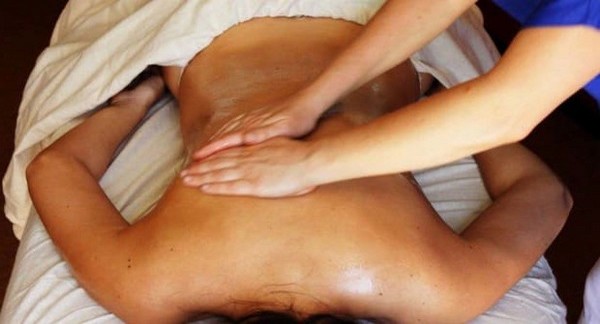
🌊 Lomi Lomi Healing Benefits
- Deep Relaxation: Wave-like motions induce profound states of calm and peace
- Emotional Release: Gentle approach facilitates processing of stored emotions
- Spiritual Connection: Promotes sense of unity and connection with natural world
- Muscle Tension Relief: Flowing strokes effectively address physical tension and pain
- Energy Balancing: Restores harmonious flow of life energy throughout body
- Stress Transformation: Converts stress into positive energy and vitality
⚠️ Lomi Lomi Considerations
Holistic Treatment Precautions: Lomi Lomi's comprehensive approach requires special awareness:
- Emotional Sensitivity: Deep work may trigger emotional releases or memories
- Energy Sensitivity: Some clients may experience intense energetic shifts
- Physical Positioning: Flowing movements require ability to change positions comfortably
- Cultural Respect: Understanding and honoring Hawaiian traditions enhances treatment effectiveness
- Pregnancy Adaptations: Techniques require modification for expectant mothers
- Medical Conditions: Chronic conditions may require gentle adaptations
Experience the sacred Hawaiian healing art of Lomi Lomi with our traditionally trained and certified practitioners. Our therapists are dedicated to providing authentic Lomi Lomi healing sessions throughout London and the wider UK. Learn more about this unique practice and book your session on our Lomi Lomi massage page.
10. Ayurvedic Massage: Ancient Indian Healing Wisdom
Ayurvedic massage therapy represents one of the world's oldest healing systems, originating over 5,000 years ago in India. This comprehensive approach to wellness has gained significant recognition in London's integrative healthcare community, offering personalised treatments based on individual constitution and specific health needs.
🕉️ Ayurvedic Assessment and Treatment Principles
Professional Ayurvedic massage involves comprehensive constitutional assessment and customised treatment:
- Dosha Evaluation: Assessment of Vata, Pitta, and Kapha constitutions for personalised treatment
- Herbal Oil Selection: Custom oil blends chosen based on individual constitution and health needs
- Abhyanga Technique: Full-body warm oil massage using specific stroke patterns
- Marma Point Stimulation: Pressure applied to vital energy points for healing activation
- Detoxification Support: Techniques designed to eliminate toxins and restore balance
Certified Ayurvedic practitioners undergo extensive training in traditional Indian medicine, including pulse diagnosis, constitutional assessment, and herbal medicine. This comprehensive education enables them to provide treatments that address the root causes of imbalance rather than merely addressing symptoms.
⚖️ Ayurvedic Healing Benefits
- Constitutional Balancing: Addresses individual dosha imbalances for optimal health
- Detoxification: Supports natural elimination of toxins and metabolic waste
- Stress Management: Calms nervous system and promotes mental clarity
- Digestive Health: Improves digestion and metabolism through specific techniques
- Skin Nourishment: Herbal oils provide deep nourishment and rejuvenation
- Longevity Support: Promotes healthy aging and vitality enhancement
⚠️ Ayurvedic Treatment Precautions
Traditional Medicine Safety: Ayurvedic treatments require specific health considerations:
- Acute Illness: Fever or infection may contraindicate oil treatments
- Pregnancy Modifications: Certain oils and techniques require adaptation during pregnancy
- Digestive Disturbances: Active digestive issues may affect oil treatment tolerance
- Medication Interactions: Herbal oils may interact with certain medications
- Skin Sensitivities: Allergies to specific herbs or oils require careful selection
- Constitutional Imbalances: Severe dosha imbalances may require medical supervision
Learn more about the ancient art of Indian head massage and its connection to authentic Ayurvedic healing with our certified practitioners. Our qualified therapists provide traditional Indian healing methods across London and the UK. To discover more about this practice, read our blog post on what is an Indian head massage.
11. Indian Head Massage: Focused Upper Body Therapy
Indian head massage therapy, also known as Champissage, originates from traditional Ayurvedic healing practices and focuses specifically on the head, neck, shoulders, and upper back. This accessible treatment has become increasingly popular in London's busy professional environment, offering effective stress relief without requiring full body treatment or clothing removal.
🧠 Indian Head Massage Techniques
Professional Indian head massage incorporates multiple therapeutic approaches for comprehensive upper body treatment:
- Scalp Stimulation: Specific finger movements to improve circulation and promote relaxation
- Pressure Point Work: Stimulation of marma points on head and neck for energy balancing
- Neck and Shoulder Focus: Targeted techniques for releasing computer-related tension
- Face and Temple Work: Gentle massage to relieve headaches and eye strain
- Upper Back Integration: Addressing tension patterns that affect head and neck comfort
This treatment is particularly valuable for London's professional population, offering effective stress relief and tension management in a convenient format. Sessions typically last 30-45 minutes and can be performed in office settings, making it an ideal workplace wellness solution.
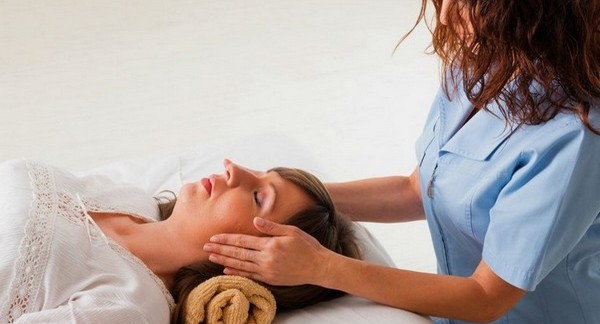
🎯 Indian Head Massage Benefits
- Headache Relief: Effective treatment for tension headaches and migraines
- Stress Reduction: Rapid relief from mental and physical stress accumulation
- Improved Concentration: Enhanced mental clarity and focus through tension release
- Better Sleep: Promotes relaxation leading to improved sleep quality
- Scalp Health: Stimulates circulation promoting healthy hair growth
- Eye Strain Relief: Addresses computer-related eye fatigue and strain
⚠️ Indian Head Massage Safety
Upper Body Treatment Precautions: Head and neck focused treatments require specific safety awareness:
- Recent Head Injuries: Concussion or head trauma require medical clearance
- Neck Problems: Cervical spine issues may require gentle modification
- Scalp Conditions: Active infections or severe skin conditions contraindicate treatment
- Severe Headaches: Migraine during acute phase may be aggravated by massage
- Blood Pressure Issues: Head positioning may affect circulation
- Recent Surgery: Head, neck, or shoulder surgery requires healing time
Relieve stress and tension with a traditional Indian head massage from our certified specialists. Our qualified therapists provide convenient and effective treatments designed for busy professionals across London and the UK.
12. Balinese Massage: Indonesian Wellness Tradition
Balinese massage therapy represents a sophisticated healing tradition from Indonesia, combining deep tissue techniques, acupressure, aromatherapy, and reflexology into a comprehensive wellness experience. This integrative approach has gained popularity in London's spa and wellness communities for its ability to address multiple therapeutic needs simultaneously.
🏝️ Balinese Massage Integration Methods
Professional Balinese massage combines multiple therapeutic modalities in a synergistic approach:
- Deep Tissue Foundation: Firm pressure techniques addressing chronic muscle tension
- Acupressure Integration: Pressure point stimulation for energy flow enhancement
- Aromatherapy Enhancement: Traditional Indonesian essential oils for holistic healing
- Gentle Stretching: Assisted movements improving flexibility and range of motion
- Reflexology Elements: Foot work addressing whole-body wellness through reflex points
Authentic Balinese massage practitioners train in traditional Indonesian healing methods, learning to blend multiple therapeutic approaches seamlessly. This comprehensive training enables them to provide treatments that address physical tension while promoting emotional and spiritual well-being.
🎥 Balinese Massage Techniques
🌿 Balinese Massage Therapeutic Effects
- Comprehensive Relaxation: Multi-modal approach provides deep physical and mental relaxation
- Improved Circulation: Deep tissue work combined with aromatherapy enhances blood flow
- Stress Relief: Integrative techniques address both physical and emotional stress
- Pain Management: Deep pressure techniques effectively address chronic muscle tension
- Energy Balancing: Acupressure elements promote harmonious energy flow
- Holistic Wellness: Combination approach supports overall health and vitality
⚠️ Balinese Massage Precautions
Multi-Modal Treatment Safety: Combined techniques require comprehensive safety consideration:
- Deep Pressure Sensitivity: Firm techniques may not suit all comfort levels
- Essential Oil Allergies: Indonesian oils may cause reactions in sensitive individuals
- Pregnancy Adaptations: Multiple modalities require careful modification during pregnancy
- Medical Conditions: Chronic conditions may require gentle adaptation of techniques
- Recent Injuries: Deep tissue elements contraindicated during acute healing
- Medication Interactions: Essential oils may interact with certain medications
Experience the comprehensive Indonesian healing tradition of Balinese massage with our traditionally trained and certified practitioners. Our therapists bring authentic Balinese healing to London and throughout the UK.
13. Relaxing Massage: Pure Stress Relief Therapy
Relaxing massage therapy represents the most popular treatment choice across Europe and the UK, designed specifically to promote deep relaxation, stress reduction, and overall well-being. This gentle, nurturing approach makes it ideal for massage newcomers, stress management, and anyone seeking pure therapeutic relaxation without a specific medical focus.
😌 Relaxing Massage Methodology
Professional relaxing massage employs gentle techniques specifically designed to promote calm and reduce stress:
- Gentle Pressure: Light to moderate pressure ensuring comfort and relaxation throughout treatment
- Flowing Strokes: Continuous, rhythmic movements promoting deep relaxation response
- Full-Body Integration: Comprehensive treatment addressing all major muscle groups
- Calming Environment: Soft lighting, gentle music, and aromatherapy enhancing relaxation
- Stress-Focused Approach: Techniques specifically targeting physical manifestations of stress
This treatment is particularly valuable for London's fast-paced professional environment, offering an accessible entry point to massage therapy while providing substantial therapeutic benefits. Regular relaxing massage sessions can significantly improve stress management and overall quality of life.
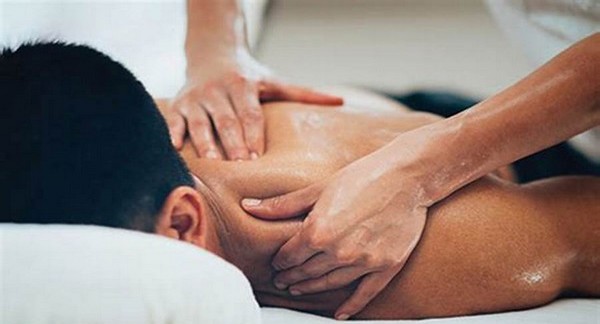
🌟 Relaxing Massage Benefits
- Stress Reduction: Decreases cortisol levels and activates parasympathetic nervous system
- Better Sleep Quality: Promotes deeper, more restorative sleep patterns
- Mood Enhancement: Increases serotonin and endorphin production for emotional well-being
- Blood Pressure Support: Gentle techniques may help reduce elevated blood pressure
- Immune System Boost: Stress reduction supports healthy immune function
- Mental Clarity: Relaxation promotes clearer thinking and decision-making
⚠️ Relaxing Massage Considerations
Gentle Treatment Precautions: Even gentle massage requires basic safety awareness:
- Acute Illness: Fever or active infection requires postponement of treatment
- Skin Conditions: Contagious conditions or open wounds need healing before massage
- Recent Surgery: Healing tissues require medical clearance before massage therapy
- Pregnancy Considerations: First trimester and high-risk pregnancies require specialist care
- Medication Effects: Some medications may affect response to massage therapy
- Comfort Levels: Always communicate preferences and comfort levels with therapist
Find pure stress relief with a relaxing massage from our certified specialists. Our qualified therapists provide gentle and effective treatments across London and the UK. For more information, visit our page on relaxing massage.
14. Chair Massage: Convenient Workplace Wellness
Chair massage therapy offers a convenient, accessible form of therapeutic bodywork performed while the client remains fully clothed and seated in a specially designed chair. This innovative approach has revolutionised workplace wellness in London, providing effective stress relief and tension management in corporate, event, and public settings.
💺 Chair Massage Advantages
Professional chair massage provides unique benefits for busy lifestyles and workplace wellness:
- Time Efficiency: Effective sessions lasting 10-30 minutes fitting into busy schedules
- Accessibility: No need for undressing or private rooms, suitable for office environments
- Upper Body Focus: Targets areas most affected by computer work and workplace stress
- Immediate Relief: Quick stress reduction and tension relief for immediate benefits
- Cost Effectiveness: Lower cost option making massage therapy more accessible
Chair massage has become particularly popular in London's corporate sector, with many companies offering on-site chair massage as part of employee wellness programs. This accessibility helps normalise massage therapy while providing genuine health benefits to busy professionals.
⚡ Chair Massage Workplace Benefits
- Productivity Enhancement: Reduces workplace stress and improves focus
- Headache Relief: Addresses tension headaches from computer work and stress
- Posture Support: Relieves tension from poor posture and repetitive movements
- Energy Boost: Provides midday energy boost without caffeine dependency
- Team Morale: Workplace wellness programs improve employee satisfaction
- Stress Management: Immediate stress relief during demanding work periods
⚠️ Chair Massage Safety
Seated Treatment Considerations: Chair massage requires specific safety protocols:
- Neck Problems: Cervical spine issues may require gentle modification
- Blood Pressure Issues: Seated position may affect circulation
- Recent Injuries: Upper body injuries require careful assessment
- Pregnancy Positioning: Later pregnancy stages may require position adjustments
- Breathing Difficulties: Chest position may affect those with respiratory conditions
- Comfort Levels: Chair fit and comfort essential for effective treatment
Discover professional chair massage services for workplace wellness through our certified therapists. Our team provides convenient and effective treatments for offices and events throughout London and the UK. To learn more about our services, please visit our chair massage page.
Professional Massage Therapy Pricing Guide: London & UK
💷 Investment in Your Wellness: 2024 Pricing Overview
Understanding massage therapy pricing helps you make informed decisions about your wellness investment. Prices vary based on therapist qualifications, location, treatment complexity, and session duration.
| Treatment Type | Duration | London Price Range | UK Average Price | Complexity Level |
|---|---|---|---|---|
| Swedish Massage | 60 minutes | £75-85 | £70-80 | Beginner-friendly |
| Deep Tissue Massage | 60 minutes | £85-95 | £80-90 | Advanced therapeutic |
| Thai Massage | 90 minutes | £95-110 | £90-105 | Specialized training |
| Hot Stone Massage | 75 minutes | £100-120 | £95-115 | Equipment intensive |
| Sports Massage | 60 minutes | £80-100 | £75-95 | Performance focused |
| Aromatherapy Massage | 60 minutes | £80-95 | £75-90 | Essential oil therapy |
| Reflexology | 45 minutes | £65-80 | £60-75 | Specialized technique |
| Indian Head Massage | 30 minutes | £45-60 | £40-55 | Convenient focused |
| Chair Massage | 15-20 minutes | £25-40 | £20-35 | Quick workplace |
Pricing Notes: Costs vary based on therapist qualifications, location within London, mobile vs. clinic services, and treatment customisation. Premium practitioners with advanced certifications may charge 10-20% above standard rates.
How to Choose a Qualified Massage Therapist
🎯 Essential Selection Criteria
Choosing the right massage therapist significantly impacts your treatment experience and outcomes. Consider these important factors:
Professional Qualifications to Verify:
- Certification Requirements: Look for qualifications from recognised institutions like ITEC, VTCT, or CIBTAC
- Insurance Coverage: Verify current professional indemnity and public liability insurance
- Continuing Education: Ask about recent training and professional development activities
- Specialization Training: Ensure specific training in techniques you're seeking
- Professional Memberships: Membership in organizations like FHT or CNHC indicates professional standards
Important Questions to Ask:
- Experience Level: How long have you been practicing massage therapy professionally?
- Specialization Areas: What conditions or populations do you specialize in treating?
- Treatment Approach: How do you customize treatments for individual client needs?
- Safety Protocols: What health screening do you conduct before treatment?
- Professional Development: What recent training or certifications have you completed?
✅ Red Flags to Avoid
- Unlicensed Practitioners: Always verify professional qualifications and insurance
- Inappropriate Behavior: Professional boundaries must be maintained at all times
- Medical Claims: Massage therapists should not diagnose or claim to cure medical conditions
- Pressure Tactics: Avoid practitioners who pressure you into treatments or packages
- Poor Hygiene Standards: Clean, professional environment essential for safety
- No Health Screening: Reputable therapists always conduct health consultations
Expert Summary: Choosing Your Ideal Massage Therapy
Your Wellness Journey Starts Here: London and the UK offer world-class massage therapy options spanning traditional healing arts to modern therapeutic approaches. Understanding these 14 professional massage modalities empowers you to make informed decisions about your health and wellness investment.
🎯 Key Recommendations by Wellness Goal:
- First-Time Clients: Begin with Swedish or relaxing massage to experience therapeutic benefits safely
- Chronic Pain Management: Consider deep tissue, sports massage, or Thai massage for targeted relief
- Stress Relief Priority: Aromatherapy, hot stone, or Lomi Lomi massage offers comprehensive relaxation
- Workplace Wellness: Chair massage or Indian head massage provide convenient stress management
- Holistic Healing: Ayurvedic, Shiatsu, or reflexology address mind-body-spirit wellness
- Athletic Performance: Sports massage supports training, recovery, and injury prevention
Professional Standards Matter: Always choose certified therapists with proper training, insurance, and professional affiliations. Quality massage therapy is an investment in your long-term health and well-being that pays dividends through improved stress management, pain relief, and enhanced quality of life.
Start Your Journey Today: Whether seeking preventive wellness care or addressing specific health concerns, professional massage therapy offers evidence-based benefits for people of all ages and activity levels. Explore qualified massage therapists in your area and begin experiencing the transformative power of therapeutic touch.
⚠️ Important Medical Disclaimer
Professional Medical Advice: This comprehensive guide provides educational information about massage therapy modalities available in London and the UK. However, this content is not intended to replace professional medical advice, diagnosis, or treatment.
Always Consult Healthcare Providers: Before beginning any massage therapy program, especially if you have medical conditions, injuries, or health concerns, consult with your physician or qualified healthcare provider. Some massage techniques may not be appropriate for certain medical conditions or during specific health circumstances.
Individual Results Vary: Massage therapy benefits vary among individuals based on health status, condition severity, and individual response to treatment. While research supports the effectiveness of massage therapy for many conditions, outcomes cannot be guaranteed.
Emergency Situations: If you experience severe pain, acute injury, or medical emergency, seek immediate medical attention rather than massage therapy.
Last Updated: December 2024 | Next Review: June 2025
This guide is regularly updated to reflect current massage therapy practices, pricing, and professional standards in London and the UK.
